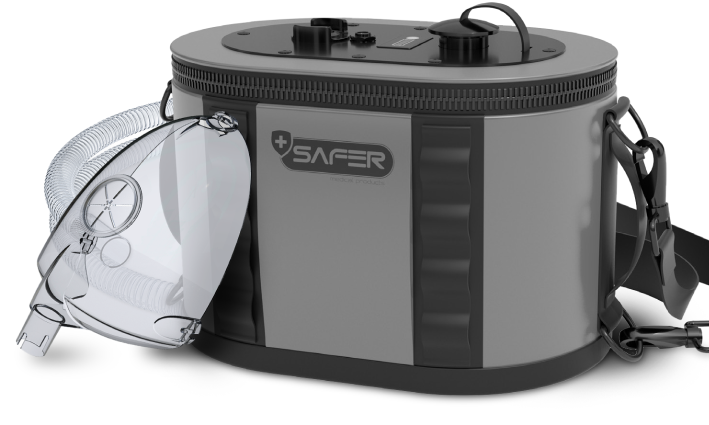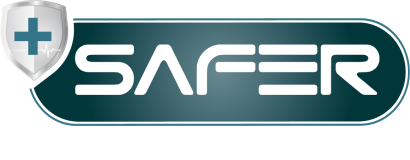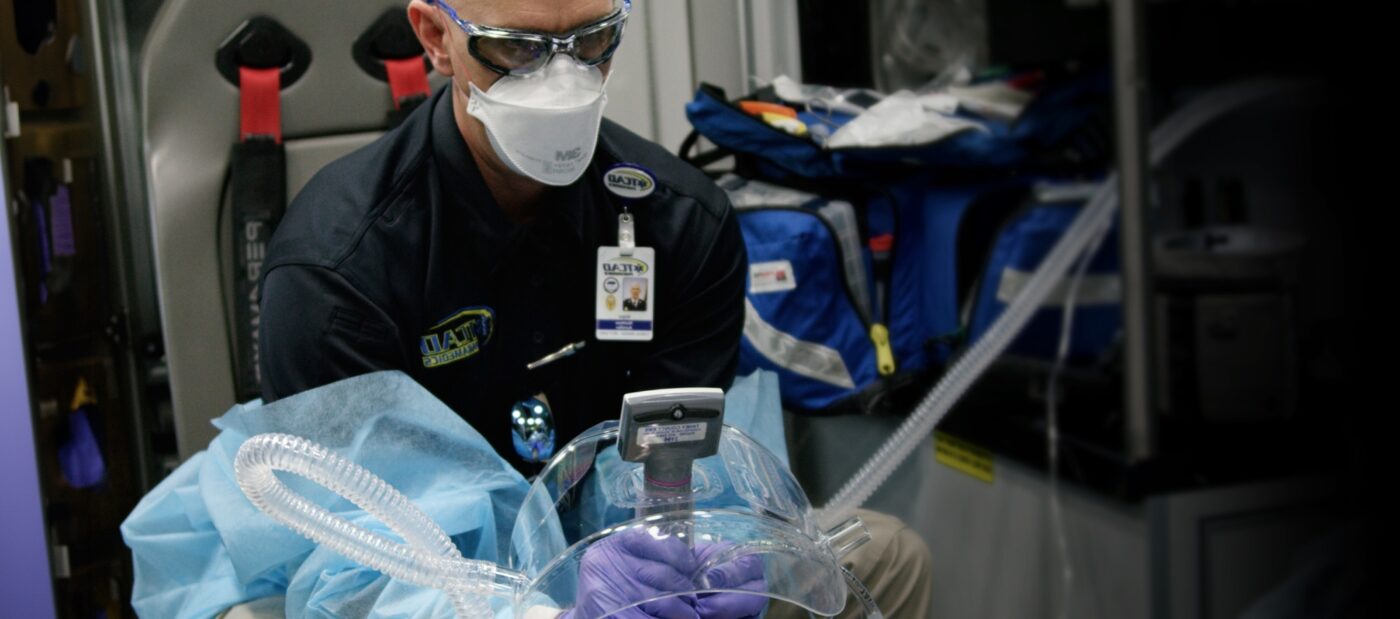
The SafER Portable Negative Pressure System for:
Hospital Systems
Protect Yourself. Protect Others.
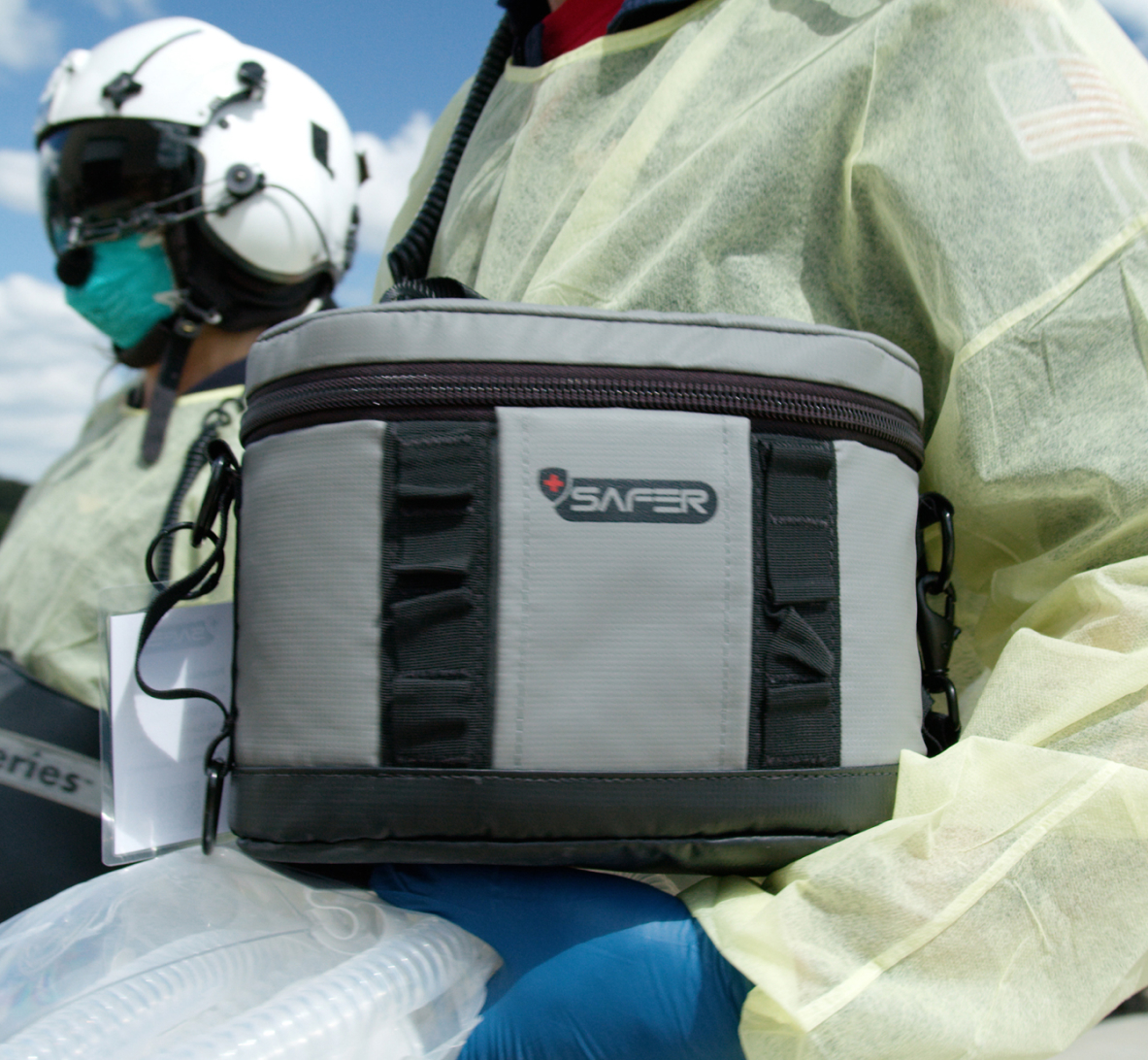
The Safer Portable Isolation System serves as a force multiplier for your facility.It provides hospitals the flexibility to provide negative-pressure isolation anywhere required.
Hospitals are using the system to increase revenue in multiple environments, from more rapid room turnover, decreased ICU days, and less days missed from work among their clinical staff. It is proving to be a game-changer across the health-care spectrum.
Scenarios where patients and hospital systems benefit from the Safer Portable Negative Pressure system
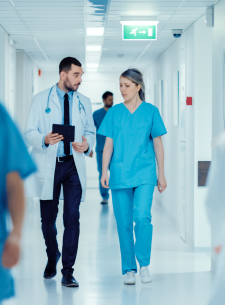
SCENARIO
A hospital’s staff frequently face exposure to infectious respiratory illnesses such as tuberculosis or COVID-19, requiring negative-pressure rooms to prevent airborne transmission. However, the limited number of negative-pressure rooms can lead to delays in isolating these patients, increasing the risk of staff exposure.
By utilizing the Safer Portable Negative Pressure System, hospitals can quickly convert standard rooms into negative-pressure environments. This rapid deployment helps contain infectious diseases more effectively, reducing the likelihood of staff exposure. As a result, the number of employee sick days decreases, leading to fewer missed shifts and avoiding costly temporary staffing arrangements.
COST SAVINGS:
- Fewer sick leave days among healthcare workers.
- Reduced need for temporary staffing or overtime pay.
- Increased productivity and workforce availability.
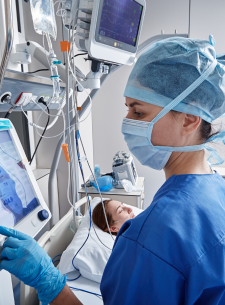
SCENARIO
A hospital with a limited number of permanent negative-pressure rooms may face a backlog of ICU patients needing isolation, such as those with multidrug-resistant tuberculosis (MDR-TB) or severe COVID-19 infections. The backlog can lead to delays in patient admissions or transfers, prolonging ICU stays due to the unavailability of appropriate isolation.
With the Safer Portable Negative Pressure System, standard ICU rooms can be converted into negative-pressure environments. This allows for quicker patient isolation, freeing up ICU beds faster. Patients who are stabilized but still require isolation can be moved to lower-acuity settings faster, freeing ICU resources for more critical cases.
COST SAVINGS:
- Reduced ICU length of stay for patients who no longer need intensive care but still require isolation.
- More efficient utilization of ICU beds, allowing the hospital to treat more patients.
- Decreased use of costly ICU resources for patients who could otherwise be moved to lower-acuity settings.

SCENARIO
Operating rooms (OR) and procedure rooms may require extensive cleaning and decontamination procedures when treating patients with airborne infections, especially when negative-pressure environments are unavailable. This can lead to delays in turnover between procedures, reducing the number of surgeries or treatments that can be performed in a day.
By deploying the Safer Portable Negative Pressure System in the OR or procedure room, hospitals can reduce the risk of airborne transmission during procedures. This would allow for faster room turnover, as the system helps contain potentially infectious particles, reducing the time needed for decontamination.
COST SAVINGS:
- Increased number of procedures or surgeries performed per day.
- Reduced downtime between cases, maximizing OR utilization.
- Shortened patient wait times for elective procedures, improving patient satisfaction and revenue.
I used it twice over the last month, it saved two people from either dying or being intubated at the time. There is no way they would have survived without being on the BIPAP. Honestly, from an ICU perspective, it keeps healthcare workers safe.

Hospital Systems Resources + Studies
-
White Paper
Intubation Endoshield Study
TESTED. PROVEN. AVAILABLE NOW.
Explore the SafER Portable Negative Pressure System
Leave it to a bunch of ER docs to build a better mouse trap.
